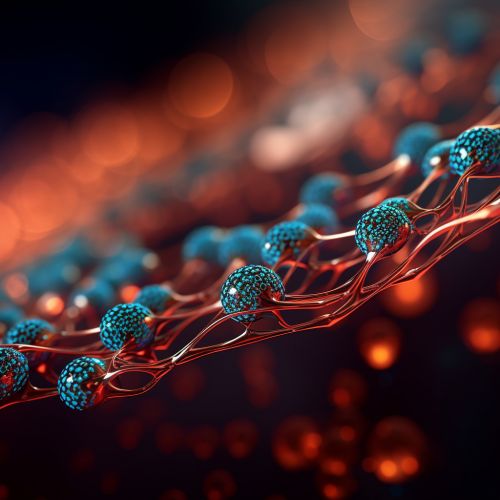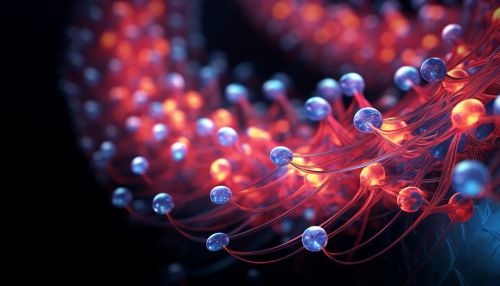Dynein
Introduction
Dynein is a family of cytoskeletal motor protein that move along microtubules in cells. They convert the chemical energy stored in adenosine triphosphate (ATP) into mechanical work. Dyneins transport various cellular cargos, provide forces and displacements important in mitosis, and drive the beating of cilia and flagella.


Structure
Dyneins are large protein complexes composed of several different polypeptides. The structure of dynein can be divided into two major parts: the head, also known as the motor domain, and the tail. The head contains the sites for microtubule binding and ATP hydrolysis, while the tail is involved in cargo binding.
Head/Motor Domain
The motor domain of dynein is a six-member AAA+ ATPase ring. This ring is unique to dynein and is not found in other ATPases. The ring is composed of four AAA+ modules (AAA1-4) and two AAA modules (AAA5 and AAA6). The AAA+ modules are responsible for ATP binding and hydrolysis, while the AAA modules are thought to play a structural role.
Tail
The tail domain of dynein is responsible for binding to various cargos in the cell. This includes vesicles, organelles, and other cellular structures. The tail also interacts with other proteins that regulate dynein activity.
Function
Dyneins perform a variety of functions in the cell, all related to the transport of materials and forces. They are involved in intracellular transport, mitosis, and the movement of cilia and flagella.
Intracellular Transport
Dyneins are responsible for the transport of a wide variety of cellular cargos. This includes the transport of organelles, vesicles, proteins, and RNA. Dynein-driven transport is typically towards the minus-end of microtubules, which is usually oriented towards the cell center.
Mitosis
During mitosis, dyneins play a crucial role in the formation and function of the mitotic spindle. They help to position the spindle and move chromosomes during cell division.
Cilia and Flagella Movement
Dyneins are the motor proteins that drive the beating of cilia and flagella. They generate the forces necessary for the bending and sliding of microtubules within these structures.
Regulation
The activity of dynein is regulated by a number of different proteins. These include dynactin, Lis1, and various kinases and phosphatases. These proteins can affect dynein's ability to bind to microtubules, its ATPase activity, and its interaction with cargo.
Clinical Significance
Mutations in dynein and its associated proteins have been linked to a number of human diseases. These include neurodegenerative diseases, such as Alzheimer's disease and Parkinson's disease, as well as developmental disorders and diseases of the cilia and flagella.
